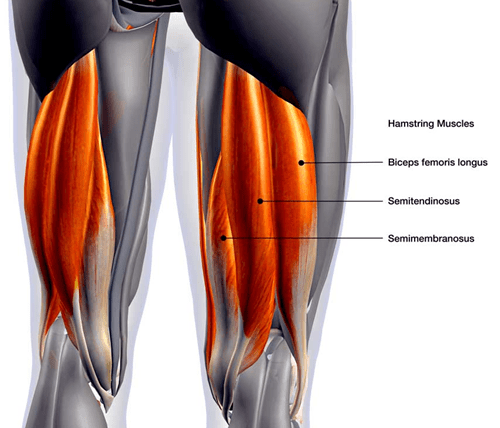By Nicole Casazza
What is Knee Osteoarthritis?
Osteoarthritis (OA) is a degenerative joint disease and is the most common type of arthritis. It occurs when the cartilage, a smooth, protective tissue that cushions the ends of bones in the joint, begins to break down. This can cause pain, swelling, and stiffness, leading to a reduced quality of life. It is commonly thought that once these structural changes occur, that a knee replacement or other surgery is needed to improve mobility and pain.
However, more recent research has highlighted a ‘person-centred’ approach, which considers other factors contributing to overall knee health. Whilst this does include osteoarthritis and bone oedema, it also includes psychological factors, weight management, lifestyle factors (physical activity and sleep), previous injury, unaccustomed load, muscle weakness and negative beliefs such as pain catastrophising and reduced confidence.
This blog aims to educate readers on the role of physiotherapy for knee osteoarthritis and is adapted from Australian Physiotherapy Association InMotion November 2024.
Symptoms of Knee Osteoarthritis
The symptoms of knee osteoarthritis can range from mild to severe, and they typically worsen over time. Common symptoms include:
- Pain: may occur during activity, after long periods of sitting, or even while at rest. The pain may be dull or aching, or it may feel sharp and stabbing in certain positions.
- Stiffness: After periods of inactivity, such as after waking up in the morning or sitting for a long time, you may experience stiffness in the knee joint.
- Swelling: Swelling in the knee can occur due to the buildup of fluid in the joint as the body responds to the inflammation caused by cartilage damage.
- Limited Range of Motion: As the condition progresses, you may find it difficult to fully extend or bend your knee. The joint may feel “locked” or stiff.
- Crepitus: You may hear or feel a grinding or cracking sensation (crepitus) when you move your knee, as the rough surfaces of the bones rub together.
Diagnosing Knee Osteoarthritis
If you’re experiencing symptoms of knee osteoarthritis, it’s essential to consult with a healthcare professional, such as a physiotherapist. Diagnosis typically involves:
- Detailed history of symptoms and a medical history to identify comorbidities, modifiable risk factors and response to previous treatment (if any)
- Physical examination and functional assessment
- Psychosocial evaluation to determine any contributing factors that may be affecting current quality of life
Imaging is not usually considered to diagnose OA, as structural changes are not always related to a patient’s level of joint function and pain, and it also will not change the treatment approach.
Treatment Options for Knee Osteoarthritis
- First-line Treatments
Exercise
- Exercise has been shown to be 2-3x more effective than paracetamol, and just as effective as common non-steroidal anti-inflammatory drugs (ibuprofen, naproxen, diclofenac, celecoxib etc.)
- Physiotherapists can tailor exercises to the patient’s current level of mobility and function, which can include:
-
- Resistance training such as lifting weights, reformer Pilates and bodyweight exercises
- Aerobic training such as walking, cycling and hydrotherapy
-
- Ideally performed 2-3x per week for 30-60 minutes, with the goal to increase this to 4-5x per week (as per current guidelines)
- Pain during exercise should be kept to below 5/10, and return to baseline after 24 hours.
Education
- The pathophysiology of OA and common misconceptions
- The benefits of joint loading for tissue health
- Self-management strategies for pain, flares, assistive devices to support mobility and physical activity participation
Weight management guidance
- Referral to a GP or dietician
- Second-line Treatments
- Manual therapy can provide short-term pain relief, but is not substantial enough to replace exercise
- Bracing and orthotics
- Taping
- Acupuncture/dry needling
- Medications can provide short-term pain relief to help with exercise
- Cortisone injections can provide short-term pain relief but research has shown that they can cause cartilage damage when repeated
- Third-line treatment
- Surgery is considered if non-surgical management fails, at the minimum after 12 weeks of conservative therapy.
Conclusion
Knee osteoarthritis is a progressive condition that can significantly impact mobility and quality of life, but with early diagnosis and appropriate treatment, many people can manage the symptoms effectively and continue to live active lives.
If you’re experiencing knee pain or other symptoms, come and see one of our physiotherapists today!
References
Anthony J Goff, Danilo De Oliveira Silva, Mark Merolli, Emily C Bell, Kay M Crossley, Christian J Barton, Patient education improves pain and function in people with knee osteoarthritis with better effects when combined with exercise therapy: a systematic review, Journal of Physiotherapy 2021;67,3:177-189.
Caneiro J, O’Sullivan PB, Roos EM, et al, Three steps to changing the narrative about knee osteoarthritis care: a call to action, British Journal of Sports Medicine 2020;54:256-258.
Søren T. Skou, Bente Klarlund Pedersen, J. Haxby Abbott, Brooke Patterson, and Christian Barton, Physical Activity and Exercise Therapy Benefit More Than Just Symptoms and Impairments in People With Hip and Knee Osteoarthritis, Journal of Orthopaedic & Sports Physical Therapy 2018;48:6, 439-447.





